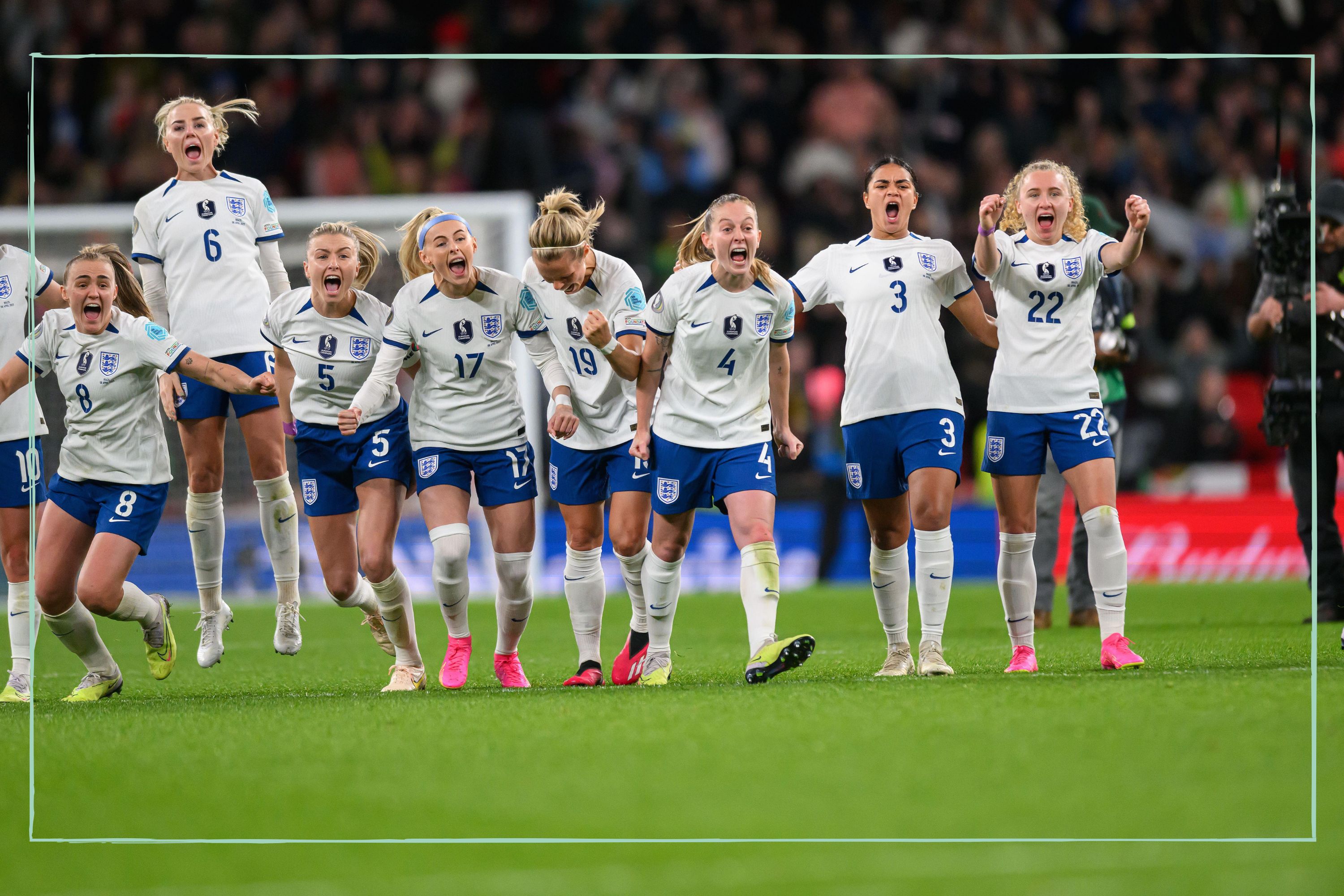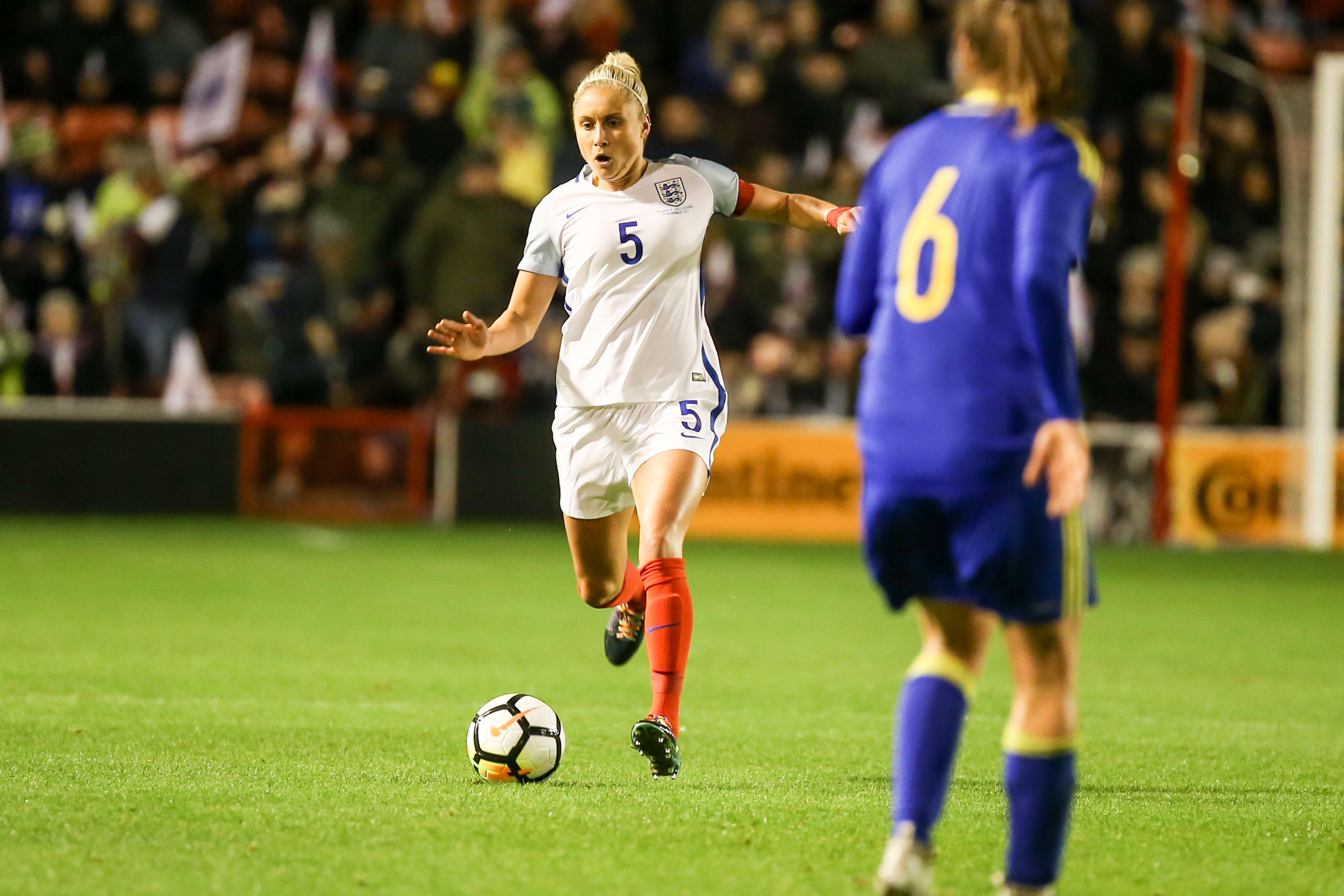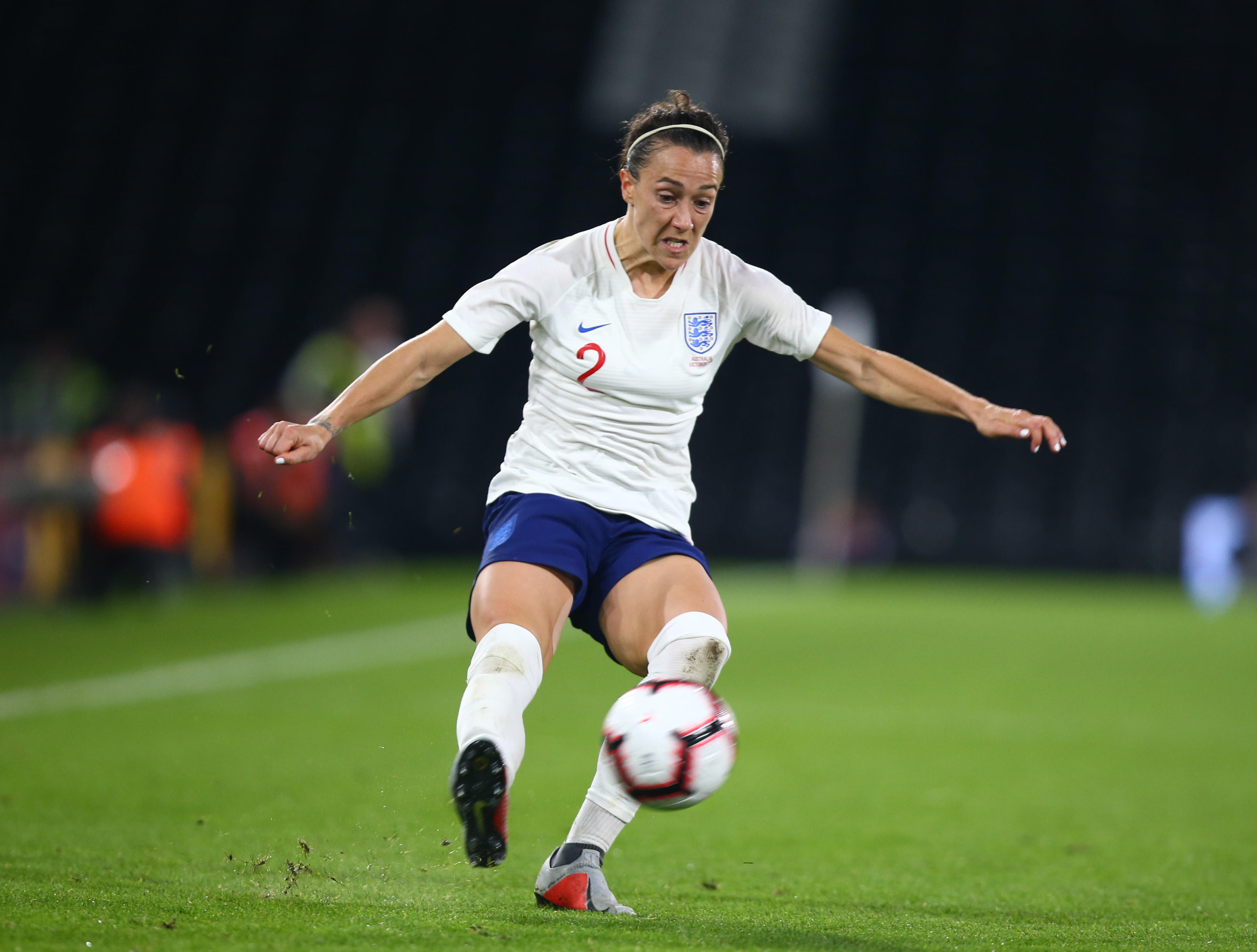
Why aren’t the Lionesses wearing white shorts? Ahead of the FIFA Women's World Cup 2023, we delve into the very good reason for the colour change.
Women’s football saw a monumental surge in popularity when the Lionesses won the UEFA Women’s Euro in 2022. With the FIFA Women’s World Cup 2023 kicking off on July 20, all eyes will be on the team to bring football home once again. The line up for the Australia and New Zealand tournament will look a little for the squad this time, with Golden Boot winner Beth Mead out with injury, and Jill Scott having announced her retirement.
Not only is the squad looking different, but so is the team’s kit. With many asking questions such as why is Sweet Caroline sung at football and what does Freedom of the City mean - the honour awarded to the team following their historic win - there’s another question on the nation’s lips: Why aren’t the Lionesses wearing white shorts? Read on to find out the very good explanation for the colour switch up.
Why aren't the Lionesses wearing white shorts?
The Lionesses aren't wearing white shorts due to the impracticality of wearing them while on their period.
Although the FA haven't revealed this specifically as the reason in their press statement, the Lionesses and other female elite athletes have long expressed concern over wearing white. Beth Mead has previously spoken about the team taking their concerns to Nike, who manufacture their kits. The sport attire giant took their requests on board, responding with the change in shorts colour to blue.
Concerted lobbying 💪🏽🙏🏽from the England women’s football team has prompted the switch of the Lionesses’ shorts from white to blue 💙The shorts also include a liner to absorb any potential leaking blood - amazing 🩸#periodpositive #periodsports #equality #perioddignity pic.twitter.com/oD1rgs4CisApril 6, 2023
According to Sky Sports, England defender Lucy Parker offered her thoughts on the change at Women's Finalissima press conference. She said "Anything that relieves the mental stress of the players is a good thing. If it's one less thing to worry about, then why not?"
In a video shared to Twitter, Rachel Brown-Finnis also spoke out on the issue, saying it's been a "long time coming." However, she add that manufacturers are only "on the cusp" of making many parts of the kit female appropriate. She said "We still haven't got goal keeper gloves designed for female athletes, we haven't got football boots designed specifically for female athletes," highlighting what a long road remains for full female clothing inclusion.
She went on to applaud the Lionesses for once again bringing a major issue to the forefront, and starting conversations about an important topic. She concluded by saying "This should be something we all talk about, and boys should know about as much as girls."
'It's been a long time coming'Rachel Brown-Finnis spoke to #BBCBreakfast after England's Lionesses revealed they will wear blue shorts instead of white at the Women's World Cup after players expressed period concernshttps://t.co/LzP73JeXBk pic.twitter.com/6UCu2bXiXPApril 4, 2023
Will the Lionesses have a new kit for the World Cup 2023?
Yes, the Lionesses will be heading to the World Cup 2023 sporting a new kit. Matching their blue shorts, the team will wear a new light-blue away jersey, while the home kit remains traditionally white.
An off-white tone for the home kit is said to be inspired by the original chalky white brick exterior of Wembley in 1923. The stadium has recently hosted the two highest attendance records for women’s football matches when the Lionesses played. Paired with blue shorts and white socks, the white jersey is also a nod to the 1984 home team - the first women's team to attend a major tournament.
Instead of their usual red, the new kit sees the blue shorts paired with a pale-blue jersey with a geometric pattern. This is said to be a nod to the Art Deco movement, and some fans have drawn parallels between the new jersey and that of England’s men’s Italia '90 kit.
⚪️🤝 🔵 pic.twitter.com/osbRzhWRJ8April 3, 2023
Why are women's football shorts shorter?
Traditionally, it was assumed that women would want their legs to appear longer, and wearing shorter shorts would lengthen their leg line.
However, this isn't an issue specific to the Lionesses, who finally had the design of their shorts made more ergonomic to their anatomy for the 2019 World Cup; albeit the colour was still an issue at that point. Nike designer Cassie Looker said at the time, her aim was to make female footballers feel "comfortable and covered and professional" in their shorts.
After previously using men's team hand-me-downs not designed for a female body, Looker had been appointed senior apparel product manager at Nike, to design and produce the first bespoke women’s kits ahead of the 2019 World Cup. In discussion with the Guardian, she said of the shorts "It’s like the Goldilocks of shorts: it has to be just right in terms of where it fits on the leg."
She explained that 3D body scanning was used to develop the perfect kit, adding "Footballers generate so much power through their lower body, so they have more developed glutes and thighs and hamstrings, and so we wanted to make sure we were accommodating for that. But not just that, we have to look at how dynamic they are on the pitch; we’re definitely designing for a body in motion. So a short that is too long can be really restrictive. Too short is too revealing."

Why are the Lionesses wearing red socks?
The Lionesses have previously worn red socks to help improve viewing for those who are colour blind, although this won't be their World Cup sock colour.
Kits need to be co-ordinated with the opposing team to avoid a colour blind kit clash, according to Talk Sport. For a particular match against Northern Ireland (prior to the decision not to wear white shorts), the Lionesses wore an all-white kit with red socks instead of their then crimson away kit. Northern Ireland's green kit mixed with England's crimson kit would be problematic when mixed, for those suffering colour blindness.
With colour blindness, cells in the back of the eye detecting red, green and blue don't work correctly or not at all. Should the England team have worn all red against a team wearing all green, someone with colour blindness wouldn't have been able to make out the players properly. The kit colours were therefore adapted accordingly, with the red socks kept as the only nod to the original away colour.

Do England Lionesses get paid for playing?
Yes, the Lionesses get paid for playing. For the 2023 World Cup, each team member will receive a guaranteed amount depending on what stage the squad reaches, as well as the £10,000 given to them to fund their families attending the tournament.
FIFA has increased the World Cup prize pool to £88.5million for 2023, considerably more than the £24million offered in 2019. Broken down, that would mean the Lionesses are guaranteed £24,000 each, even if they don't make it past the group stages. For a round 16 exit that rises to £47,000, increasing to £70,000 should they make the final eight.
Rising another increment, the women would make up to £128,000 should they finish in fourth place, and a win would see every member of the squad receive £213,000. However, although gender equality is improving in relation to kits and other aspects of the game, the women's prize pot is still significantly lower than the men's, who take home a share of a very large £313million.
In other football news, we look at how much Ryan Reynolds paid for Wrexham Football Club. The documentary he took part in about buying the club was so popular, fans are hoping for a Welcome To Wrexham season 2. Although after welcoming his fourth child, Reynolds' wife and kids might want him to stay a bit closer to home.







